7 Design Mistakes Making Your Home Look Cheaper (And How to Fix Them for Under $500)
We’ve all been there. You’ve put effort (and money) into your space, but something still feels… off. Maybe it looks a little chaotic, a little “starter home,” or just not quite pulled together. We’ve got good news: it’s probably not your taste; it’s a few common design mistakes that are surprisingly easy (and inexpensive) to fix. Most can be solved for under $500, and some cost nothing at all.
Let’s look at the seven design mistakes that make homes look cheaper than they are and how to fix them:
1. Buying Furniture Before Measuring
We get it. You see the perfect sofa online, it’s on sale, and you click “buy now” before thinking twice. Then it arrives, and (womp, womp) it’s massive. Or tiny. Or blocks the walkway.
Why It Looks Cheap: Furniture that doesn’t fit your space properly—whether too big or too small—makes the entire room feel awkward and poorly planned.
The Fix:
- Measure your room and doorways FIRST. Seriously. Get a tape measure and your phone’s notes app.
- Use painter’s tape on the floor to map out furniture dimensions before buying.
- Leave breathing room: Sofas should have 12-18 inches between them and coffee tables. Walking paths need at least 30 inches.
Where to Shop Right: Room & Board and Article both list exact dimensions clearly. West Elm has a Room Planner AR tool so you can see how it fits and if you like it IRL.
Pro Tip: Take a floor plan to the store (or send it to online chat support). Many retailers will help you check if pieces will work in your space.
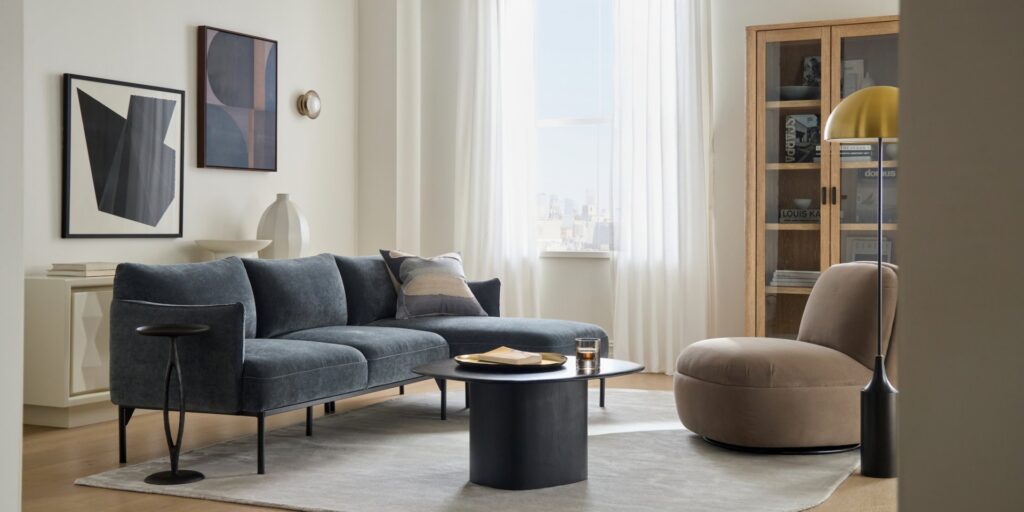
West Elm
2. Ignoring Scale and Proportion
A king bed with nightstands the size of shoe boxes. A delicate floor lamp next to a massive sectional. An itty-bitty coffee table drowning in front of a huge sofa. These mismatches scream I didn’t know what I was doing.
Why It Looks Cheap: When pieces don’t relate to each other in size, the room feels unbalanced and haphazard.
The Fix:
- Coffee tables should be about two-thirds the length of your sofa.
- Nightstands should be roughly the same height as your mattress (24-28 inches).
- Lamps should be proportional to the table they sit on, and the shade shouldn’t be wider than the table.
- Artwork should take up about two-thirds to three-quarters of the wall space above furniture.
Where to Shop: CB2 has affordable modern pieces in various scales. Crate & Barrel clearly shows dimensions and offers scale guides.
Pro Tip: When in doubt, go slightly bigger with rugs, art, and mirrors. Small accessories scattered around are what make spaces look cluttered and cheap.
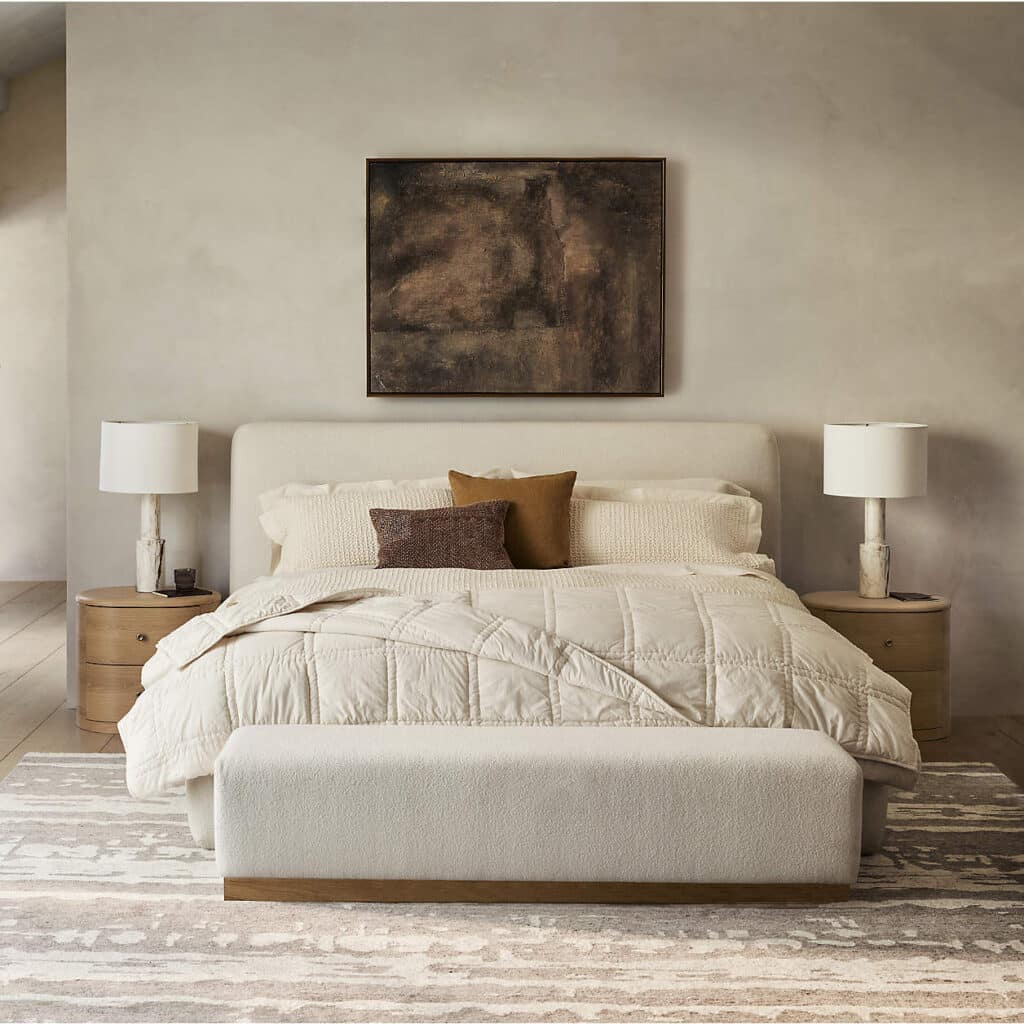
Crate & Barrel
3. Fake Plants Look Fake
Look, we know not everyone has a green thumb. But that dusty silk ficus from 2008 or those plastic succulents covered in dust? They’re making your space look worse, not better.
Why It Looks Cheap: Bad fake plants look obviously artificial, collect dust, and give an I gave up on trying vibe.
The Fix:
- Go real with self-watering planters. No more killing plants! Easyplant has gorgeous self-watering options that do the work for you.
- Choose low-maintenance plants: Pothos, snake plants, and ZZ plants can survive almost anything.
- Skip fake plants entirely and use sculptural vases, books, or decorative objects instead.
Where to Shop: Easyplant for self-watering planters. The Sill for real plants with care guides.
Pro Tip: We’d rather see an empty corner than a sad fake plant. If you can’t commit to real plants, opt for other decor elements like a floor lamp, sculpture, or stack of design books.
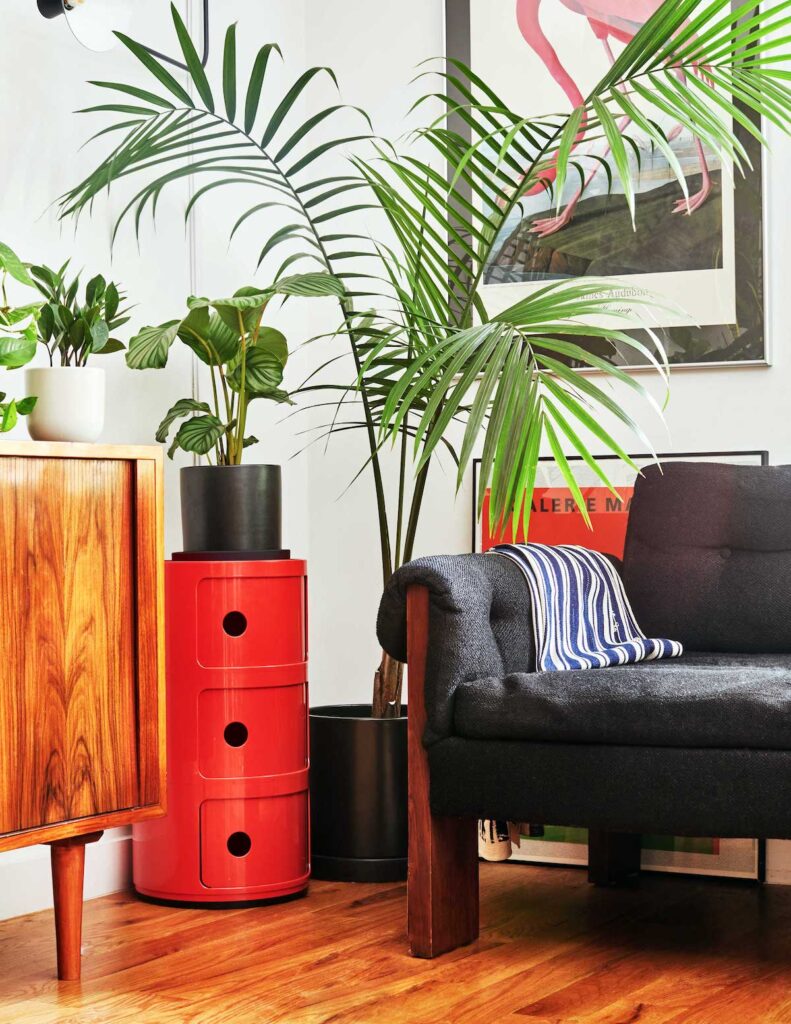
The Sill
4. Following Trends Without Considering Your Lifestyle
All-white interiors look dreamy on Instagram. But if you have kids, pets, or, you know, live in your home, that white linen sofa is going to stress you out more than it relaxes you.
Why It Looks Cheap: When trendy choices don’t match your real life, they end up looking dirty, damaged, or poorly maintained, which ends up reading as cheap.
The Fix:
- Be honest about your lifestyle. Kids? Pets? Someone who eats on the couch? Choose durable, washable, forgiving materials.
- Opt for performance fabrics in lighter colors instead of untreated linen or velvet.
- Choose darker or patterned rugs if you have high traffic.
- Skip glass coffee tables if you have toddlers (fingerprints galore) or sharp corners if you have little ones.
Where to Shop: Article and Room & Board offer performance fabrics. Pottery Barn has excellent stain-resistant options.
Pro Tip: Love the look of white but need durability? Go with off-white or warm grays in performance fabrics. You get the aesthetic without the anxiety.
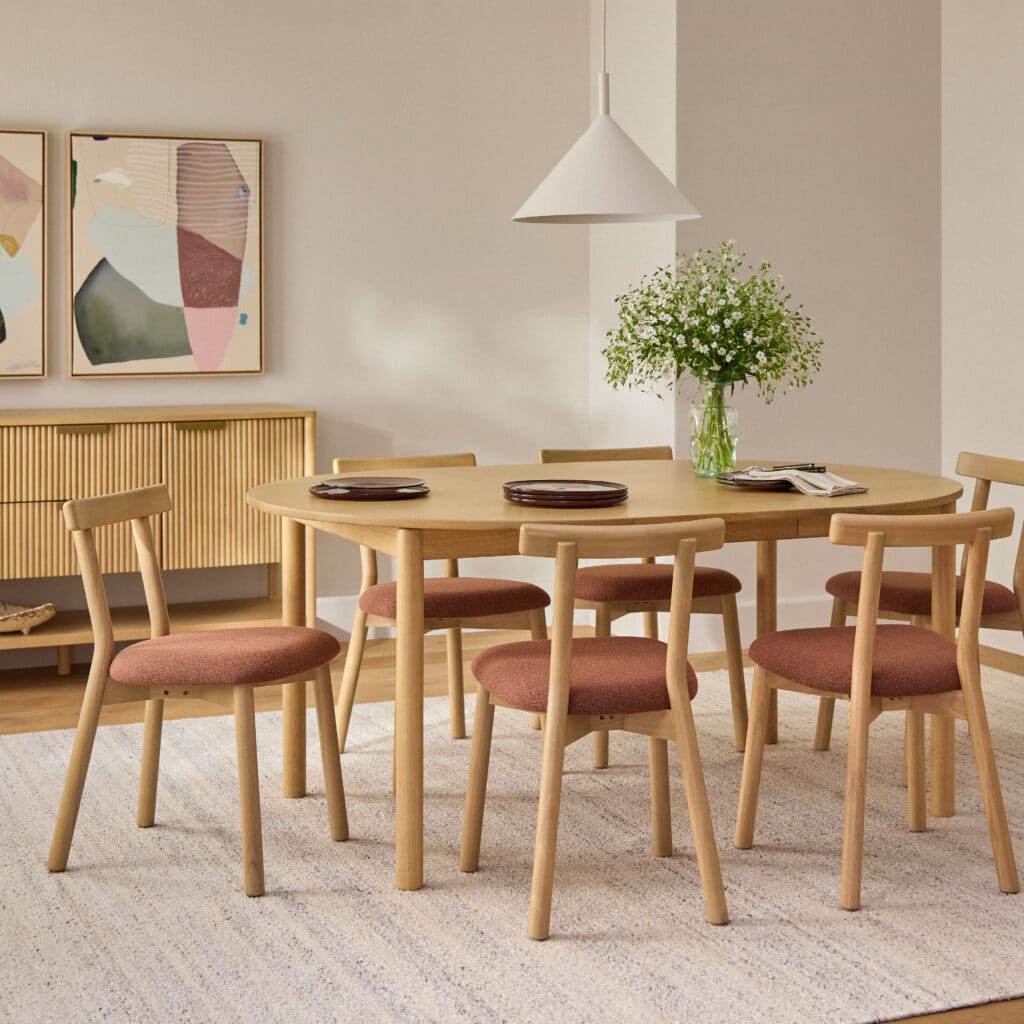
Article
5. Skipping Window Treatments
Bare windows feel unfinished, like you just moved in and haven’t gotten around to decorating yet. Even beautiful windows benefit from some treatment.
Why It Looks Cheap: Naked windows make rooms feel stark, cold, and incomplete, no matter how nice your furniture is.
The Fix:
- Add curtains or shades—even simple ones make a huge difference.
- Hang curtain rods high and wide: Mount rods close to the ceiling and extend them 6-12 inches beyond the window frame. This makes windows (and ceilings) look bigger.
- Let the curtains skim right to the floor. Floating curtains that end mid-wall look cheap.
- Choose simple, neutral panels if you’re on a budget. Save patterns for throw pillows.
Where to Shop: Half Price Drapes has affordable linen curtains. Two Pages offers modern options. IKEA for budget-friendly basics.
Pro Tip: If curtains aren’t in the budget right now, start with inexpensive tension rods and linen panels from IKEA. You can upgrade later, but it instantly makes the room feel more finished.
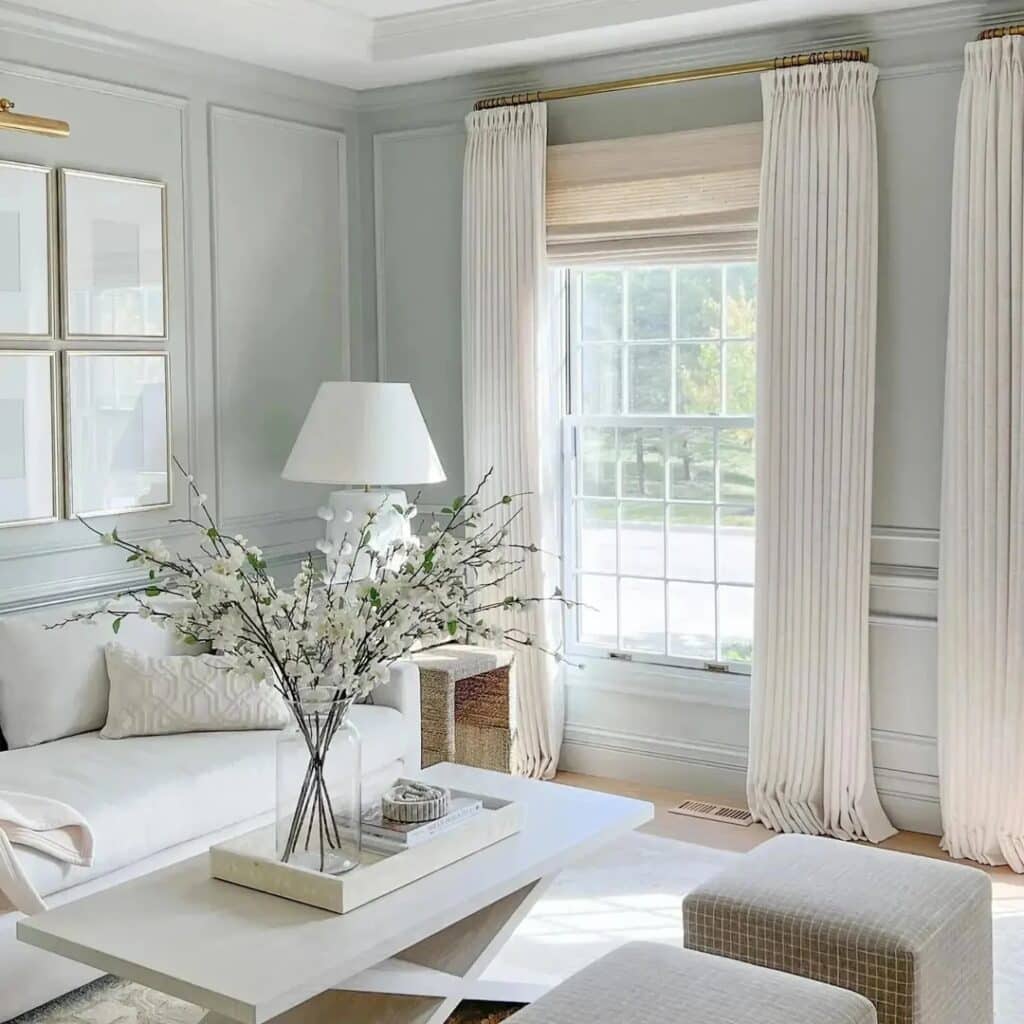
Two Pages
6. Using Only One Type of Texture
All smooth leather, glass, and painted surfaces. Or the opposite—everything soft and plush with no contrast. Either extreme makes a room feel flat and one-dimensional.
Why It Looks Cheap: Without varied textures, spaces lack depth and visual interest. They feel like showroom floors, not homes.
The Fix:
- Mix textures intentionally: Pair a leather sofa with a chunky knit throw. Add a jute rug under a velvet chair. Place a ceramic vase next to wooden bowls.
- Layer materials: Wood + metal + fabric + stone = visual richness.
- Add texture through accessories if your furniture is mostly smooth: woven baskets, linen pillows, wood trays, ceramic planters.
Pro Tip: The easiest textural add? Throw blankets and pillows. Mix linen, velvet, cotton, and chunky knits for instant depth.
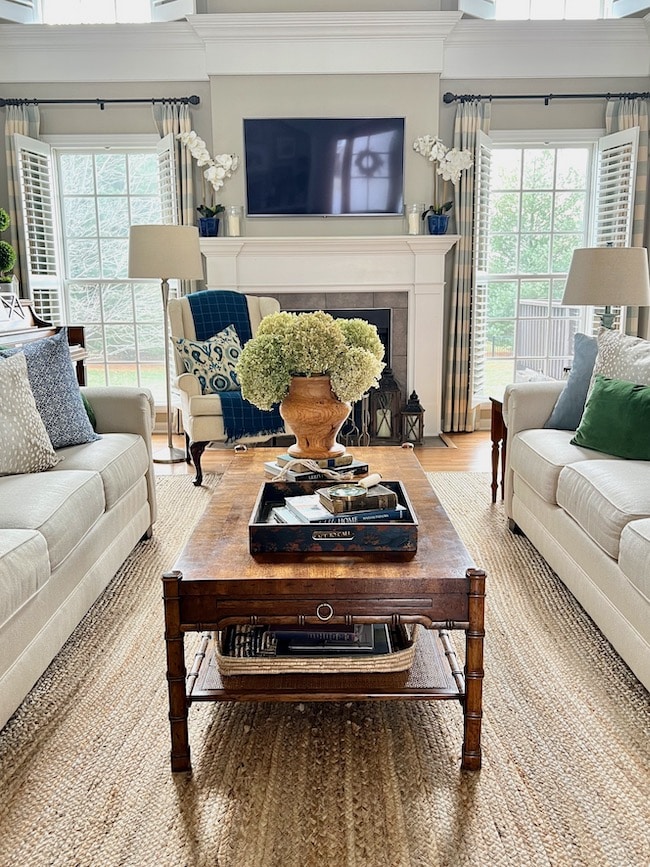
7. Forgetting About Negative Space
Every surface covered. Every shelf packed. Every wall filled. It’s visual chaos, and it makes even expensive pieces look cheap.
Why It Looks Cheap: When there’s too much stuff and no breathing room, the eye doesn’t know where to land. It looks cluttered, not curated.
The Fix:
- Embrace empty space. Negative space makes what you DO display look more intentional and expensive.
- Follow the rule of three: Group decor in odd numbers (3 or 5 items) rather than lining everything up.
- Leave surfaces 50% clear: Coffee tables, nightstands, and console tables should have breathing room.
- Edit your shelves: Remove half of what’s there. Space out books. Add negative space between objects.
Pro Tip: Take a photo of your space. If it looks cluttered in the image, it’s cluttered in real life. Start removing things until it feels balanced.
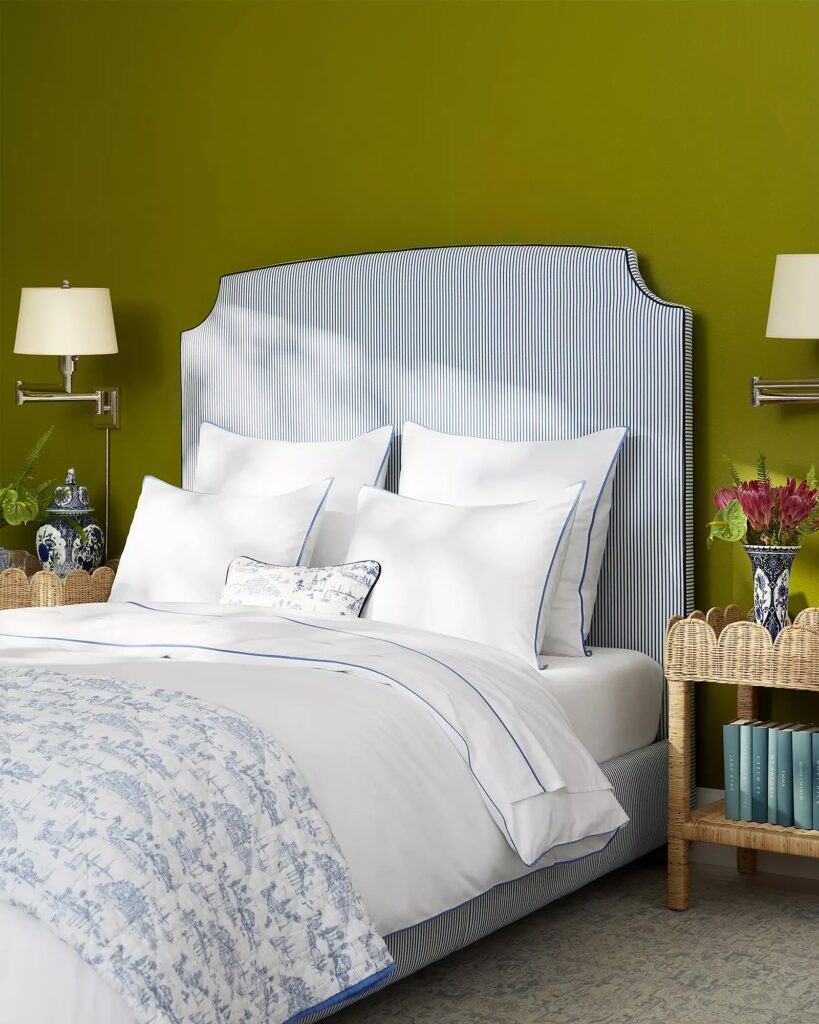
Make Your Home Look Expensive (Without Spending a Fortune)
A polished, expensive-looking home is more about making smart design choices than how much you spend. Measure before you buy. Choose the right scale. Embrace real plants (or ditch fake ones). Match your lifestyle. Add window treatments, texture, and negative space.
These fixes cost less than $500 total, and some cost nothing at all. But the impact? Huge.
Need help figuring out what’s holding your space back? Our designers spot these issues in one consultation and give you a clear plan to fix them—no fluff, just solutions. We offer Consult Plans starting at $799 and Makeover Plans starting at $1,499.
Book a free consultation with our team today, and let’s make your space look like the expensive, pulled-together home it deserves to be.